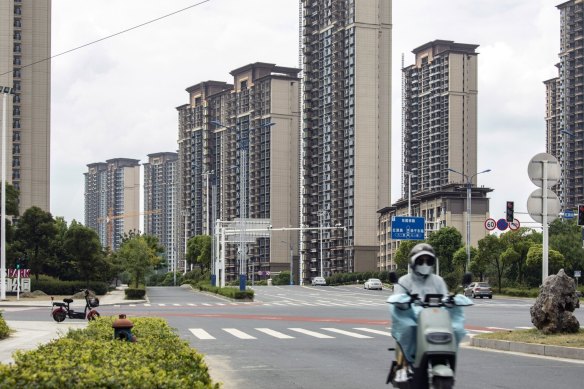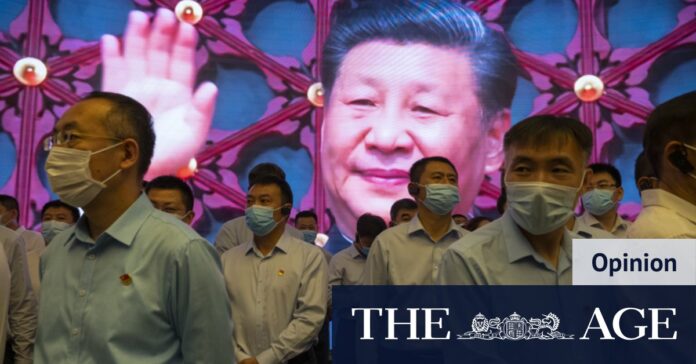[ad_1]
With consumers buying so little, at least relative to the Chinese economy’s productive capacity, how can the nation generate enough demand to keep that capacity in use? The main answer, as Michael Pettis, professor of finance at Guanghua School of Management at Peking University in Beijing, says, has been to promote extremely high rates of investment, more than 40 per cent of GDP. The trouble is that it’s hard to invest that much money without running into severely diminishing returns.

China’s property issue is just one problem Beijing is dealing with. Credit: Bloomberg
True, very high rates of investment may be sustainable if, like China in the early 2000s, you have a rapidly growing workforce and high productivity growth as you catch up with Western economies. But China’s working-age population peaked around 2010 and has been declining ever since. While China has shown impressive technological capacity in some areas, its overall productivity also appears to be stagnating.
This, in short, isn’t a nation that can productively invest 40 per cent of GDP. Something has to give.
Now, these problems have been fairly obvious for at least a decade. Why are they only becoming acute now? Well, international economists are fond of citing Dornbusch’s Law: “The crisis takes a much longer time coming than you think, and then it happens much faster than you would have thought.” What happened in China’s case was that the government was able to mask the problem of inadequate consumer spending for a number of years by promoting a gigantic real estate bubble. In fact, China’s real estate sector became insanely large by international standards.
But bubbles eventually burst.
To outside observers, what China must do seems straightforward: end financial repression and allow more of the economy’s income to flow through to households, and strengthen the social safety net so that consumers don’t feel the need to hoard cash. And as it does this it can ramp down its unsustainable investment spending.
It has been clear for a long time that China’s economic model was becoming unsustainable.
But there are powerful players, especially state-owned enterprises, that benefit from financial repression. And when it comes to strengthening the safety net, the leader of this supposedly communist regime sounds a bit like Mississippi governor Tate Reeves, denouncing “welfarism” that creates “lazy people”.
So how worried should we be about China? In some ways, China’s current economy is reminiscent of Japan after its bubble of the 1980s burst. However, Japan ended up managing its downshifting well. It avoided mass unemployment, it never lost social and political cohesion, and real GDP per working-age adult actually rose 50 per cent over the next three decades, not far short of growth in the United States.
Loading
My great concern is that China may not respond nearly as well. How cohesive will China be in the face of economic trouble? Will it try to prop up its economy with an export surge that will run headlong into Western efforts to promote green technologies? Scariest of all, will it try to distract from domestic difficulties by engaging in military adventurism?
So let’s not gloat about China’s economic stumble, which may become everyone’s problem.
This article originally appeared in The New York Times.
The Business Briefing newsletter delivers major stories, exclusive coverage and expert opinion. Sign up to get it every weekday morning.
[ad_2]
Source link


